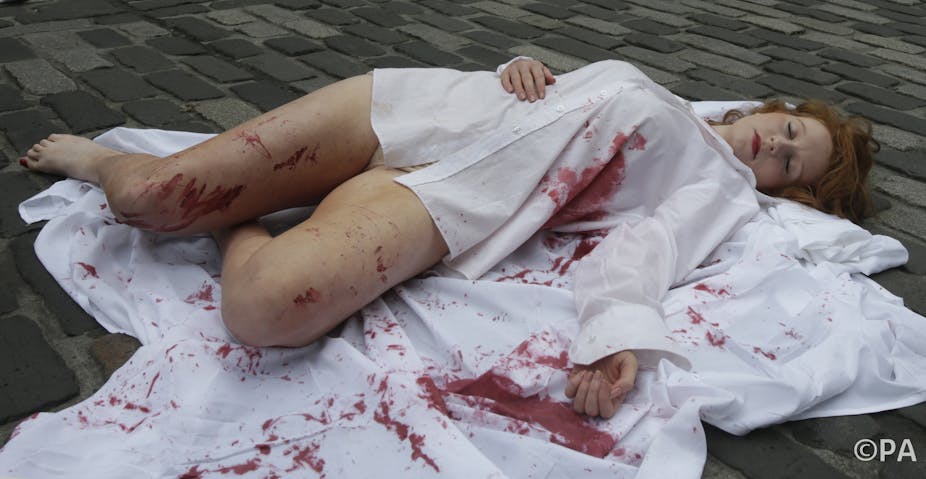Playwright Mark Ravenhill’s provocative opening speech at this year’s Edinburgh Festival outlined a doomsday scenario where public funding for the arts disappeared and Britain descended into a cultural desert.
This was followed by an article in The Stage, the principal news outlet for the performing arts, entitled Arts face £124m extra local funding cuts, following the publication of the budgeted expenditure of local authorities for the year 2013/2014.
It sounds like scary stuff, but a closer look at the actual published data, reveals that the headline is somewhat misleading: the £124m figure covers cuts to “cultural and related services”, which encompass archives, culture and heritage, recreation and sport, open spaces, tourism and library service. If we extrapolate from the accounts, the cuts to “culture and heritage” amount to £32.1m.
Ravenhill’s speech and The Stage’s article reflect a growing weariness in a sector that has already endured a first wave of funding cuts last year, both at national and local level.
Local authorities might be less immediately visible than bodies like the Arts Council or the National Lottery Fund, but they are still a key player in the support of arts institutions and in the provision of cultural services throughout the country.
A report published earlier this year by the Local Government Association (LGA) found that their contribution to supporting the arts, museums and culture amounts to £800m per year, comparable to that of dedicated bodies such as Arts Council England (ACE).
Local governments often join forces with other funders to support arts projects. The Edinburgh Festival, for instance, is co-funded by Edinburgh city council and Creative Scotland (ACE’s Scottish counterpart), in addition to raising cash through ticket sales and sponsorships.
In other words, local authority funding is crucial to the cultural life of Britain. It sustains local cultural organisations and supports arts activities that often wouldn’t manage to secure funding elsewhere. This often includes participatory or community-based programmes, sometimes provided as part of the delivery of other services, such as health and social services.
Local arts funding can also be a part of often very ambitious economic regeneration programmes. Cities such as Glasgow and Liverpool are textbook examples. Substantial investment in the arts and culture were key parts of their urban renewal plans.
The longstanding commitment of local authorities is especially remarkable given that arts and culture (with the exception of libraries) is an area of discretionary spending for them. In other words, councils up and down the country choose to spend on the arts, they don’t have to in the same way that they must provide educational or social services to their local population.
However, the discretionary status of cultural spending makes it very vulnerable. When the going gets tough, and the overall pot of money is substantially reduced, discretionary spending areas are logically where the cuts are likely to be made.
Indeed, a few councils have announced 100% cuts to their cultural budget, including most prominently Westminster in central London. Arts Development UK’s 2012 report on local authorities’ spending shows there has been a consistent downward trend in spending, with the average arts expenditure by surveyed councils down by 38% since 2008.
So what lies ahead for cultural provision at the local level? And how will the cuts affect the quality of cultural life in Britain?
There is no doubt that a lot of arts organisations will cease to exist; many already have. Performances, exhibitions, community arts projects will not take place across the country. The Lost Arts website is keeping a somber and sobering tally of money, jobs, activities, projects and organisations that have been lost because of the cuts.
Playwright Fin Kennedy has conducted a survey with several key theatre organisations committed to developing and producing new plays. The picture emerging is a worrying one, where the worst hit theatres are often regional ones, and where arts funding cuts are compounded by the reduced spending by city councils.
This downward trend in cultural investment at both central and local government levels will hit regional and rural areas the hardest. Cultural spending in these places has always been much lower than in central urban areas and the South.
London and the South East are going to be more successful at filling up at least some of the funding gaps caused by reduced public spending via private sponsorship and donations: a recent report by Arts & Business argues that about 90% of their total is attracted by London alone.
The picture I have painted so far is a rather bleak one. But Britain is not about to turn into a cultural desert just yet, and it is important to remember this. Not all the cultural activity of the country is directly linked to funding, and the end of British arts public funding isn’t upon us just yet anyway.
One constructive way of dealing with the post-cuts landscape is to ask whether a more systematic, coherent and coordinated approach to the distribution of what public funds are still available for the arts and culture - amounting to approximately 0.1% of all public spending - might help.
The local government spending survey mentioned earlier observed “a significant decline in partnership working between the Arts Councils in England and Wales and some local authorities”, probably due, among other things, to cuts in staffing on both sides.
So much of the energy in the arts sector is currently engaged in campaigning to halt the cuts and make the case for funding, and the worry is that this makes people lose sight of other issues.
Considering how important co-funding is in supporting cultural ecosystems throughout the country, and especially in the regions, developing a new strategy to invest what money is still left in the system seems an equally important endeavour.

